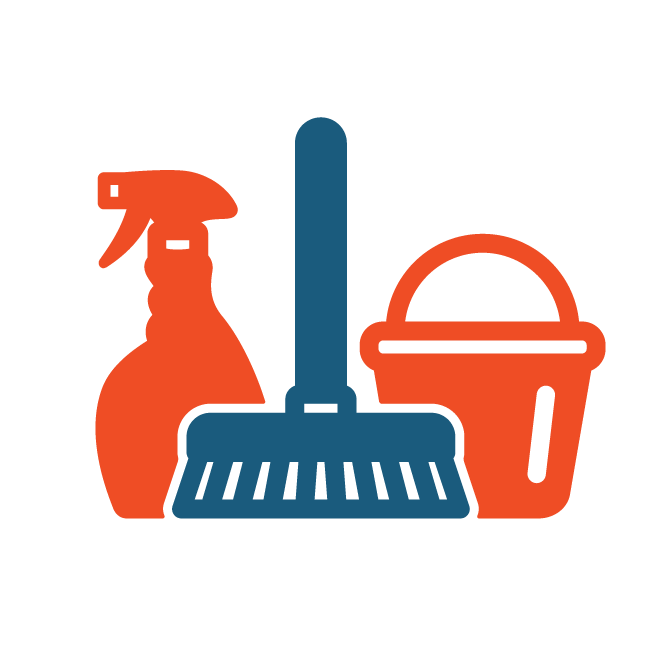Make The Most Of Effectiveness and Security: Finest Practices in Facility Management
In today's swiftly evolving landscape, taking full advantage of effectiveness and security in facility management has become a critical emphasis for companies striving to boost functional efficiency. By incorporating wise innovation, prioritizing maintenance methods, and cultivating a society of safety, facility supervisors can substantially enhance both productivity and compliance. Nonetheless, the difficulty hinges on effectively applying these methods while navigating the intricacies of contemporary work environments. What details methods can be employed to make certain that these efforts not only coexist but additionally strengthen one an additional in a sustainable fashion?
Embrace Smart Modern Technology

Applying smart sensors and automation systems enables for exact monitoring of ecological problems, tenancy degrees, and equipment performance. This data-driven technique not just educates decision-making yet additionally sustains anticipating maintenance, minimizing downtime and extending asset life. Clever modern technology enhances user experience by producing flexible atmospheres that react to the requirements of passengers.
Integrating wise platforms also advertises sustainability campaigns, such as energy-efficient lighting and heating and cooling systems, contributing to decreased carbon footprints. By embracing these innovations, center supervisors can make sure that their operations remain competitive, resistant, and straightened with modern sustainability goals. Ultimately, the change in the direction of wise innovation represents a transformative action in redefining center monitoring for a much more lasting and effective future.
Prioritize Routine Maintenance
Normal upkeep is important for guaranteeing the durability and performance of center procedures. A well-structured maintenance program not only expands the life of devices and infrastructure yet additionally decreases the likelihood of unanticipated failures that can disrupt procedures. By prioritizing regular upkeep, facility supervisors can determine potential problems early, enabling timely treatments that reduce pricey repair services and downtime.
Establishing a regular maintenance timetable is vital. This must include normal evaluations, maintenance, and needed repairs for all devices, heating and cooling systems, pipes, and electrical systems. Using a computerized upkeep management system (CMMS) can enhance this process, supplying monitoring and notifies for upcoming upkeep tasks.
Additionally, fostering a society of accountability among team enhances the efficiency of upkeep efforts. Educating employees to report and acknowledge upkeep issues can cause aggressive management instead than responsive responses. Furthermore, documenting maintenance tasks ensures compliance with safety and security regulations and offers useful understandings for future planning.
Implement Safety Training Programs
A thorough safety training program is vital for cultivating a safe and secure workplace in any type of center. Facility Management. Such programs outfit staff members with the expertise and abilities needed to determine threats, apply safety more info protocols, and respond efficiently in emergencies. By prioritizing security training, companies can dramatically lower the threat of injuries and crashes, consequently boosting total performance
To apply a reliable security training program, it is crucial to tailor the web content to the specific needs of the facility and its operations. This includes conducting a comprehensive risk evaluation to recognize possible dangers special to the work environment. Training must include a variety of topics such as correct devices usage, emergency evacuation treatments, and emergency treatment methods.
Furthermore, it is important to engage staff members actively during training sessions. Making use of hands-on demos and real-life scenarios can boost understanding and retention of safety and security methods. Regular refresher courses need to additionally be arranged to keep safety and security understanding at the forefront.
Optimize Room Use
Efficient area utilization is a critical part of facility management that straight impacts functional effectiveness and cost-effectiveness. Organizations frequently deal with underutilized or jammed areas, leading to inadequacies and enhanced expenditures. To enhance room use, facility supervisors must conduct normal assessments to recognize how rooms are currently being made use of and where improvements can be made.
Applying flexible workspace styles, such as open office designs or modular furnishings, can considerably boost adaptability to transforming needs. Furthermore, leveraging modern technology, such as area management software application, can provide important understandings into occupancy patterns and assist identify underused areas.

Establish Clear Interaction Channels
Optimizing area use usually reveals the need for robust communication techniques within a center. Clear interaction networks are crucial for assisting in efficient cooperation amongst team, upkeep groups, and management. By establishing these channels, facility managers can ensure that information streams effortlessly pertaining to room use, functional modifications, and security procedures.
Carrying out a multi-faceted interaction technique-- incorporating electronic systems, such as e-mails and group partnership tools, with face-to-face more info interactions-- can significantly enhance involvement and details dissemination. Regular conferences need to be set up to go over continuous jobs, address issues, and share updates. Additionally, developing a central info center, such as an intranet, allows employees to access vital records and statements quickly.
Moreover, responses devices are important to evaluate the effectiveness of communication approaches. Motivating staff to share their understandings can cause enhancements and foster a society of openness. Educating programs concentrated on interaction skills can better equip employees to share info clearly and properly.
Eventually, developing clear communication channels not just makes best use of effectiveness but additionally enhances safety and security by guaranteeing that every person is notified and straightened with the facility's functional objectives.

Final Thought
Finally, the assimilation of wise technology, routine maintenance, detailed safety training, maximized space application, and effective interaction channels jointly enhances effectiveness and safety in facility monitoring. By leveraging IoT and AI for real-time website tracking, companies can reduce functional expenses while making certain compliance with safety and security regulations. A positive approach to maintenance and training cultivates a safer workplace setting, ultimately causing boosted performance and business success. These best techniques act as vital parts for effective facility monitoring.
In today's quickly advancing landscape, making the most of efficiency and safety and security in facility administration has ended up being an essential emphasis for organizations aiming to improve functional performance. By integrating wise innovation, focusing on maintenance procedures, and promoting a culture of security, facility managers can considerably enhance both efficiency and compliance.To execute an effective safety training program, it is essential to tailor the content to the specific demands of the center and its procedures. By developing these networks, center managers can guarantee that information flows seamlessly pertaining to room use, operational changes, and safety and security procedures.
In verdict, the assimilation of wise innovation, regular upkeep, detailed security training, optimized room use, and effective interaction networks collectively boosts effectiveness and security in center monitoring. - Facility Management
 Daniel Stern Then & Now!
Daniel Stern Then & Now! Andrew Keegan Then & Now!
Andrew Keegan Then & Now! Destiny’s Child Then & Now!
Destiny’s Child Then & Now! Seth Green Then & Now!
Seth Green Then & Now! Pierce Brosnan Then & Now!
Pierce Brosnan Then & Now!